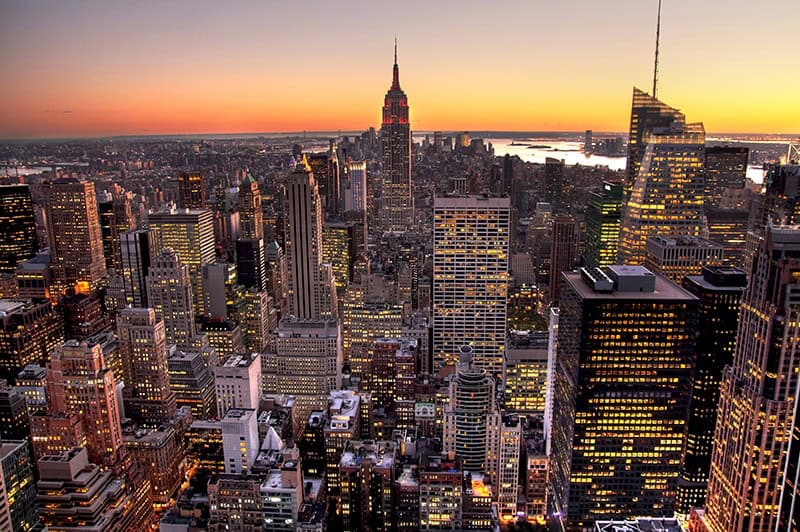Concept
In this assignment, I used loops and basic functions to show the hectic, vibrant, and bustling nightlife of New York City. I wanted to express how I felt when I saw the night sky view of NYC.

I was captured by NYC’s iconic skyline, which is illuminated by countless skyscrapers, billboards, and streetlights. The city’s streets and buildings are bathed in a sea of lights, creating a dazzling and energetic atmosphere. Times Square, in particular, is known for its vibrant, neon-lit signs and bustling nightlife.
Even the moon is vibrantly moving in NYC. The night view of NYC is indeed hectic, but it’s also a unique and exciting experience for visitors and residents alike. When I saw numerous buildings in the skyline, I felt that not only New Yorkers, but everything in NYC kept changing. The city’s energy and vibrancy come to life after dark, offering a wide range of activities and entertainment options to suit every taste.
The highlight of My Code
// Draw cityscape buildings
fill(100); // Building color
for (let x = 50; x < width; x += 100) {
let buildingHeight = random(100, 300);
rect(x, height - buildingHeight, 80, buildingHeight);
// Windows in buildings
for (let y = height - buildingHeight + 20; y < height - 20; y += 40) {
for (let i = x + 10; i < x + 80; i += 20) {
fill(random(0,200, 255), random(0,200, 255), 0); // Random yellowish lights
rect(i, y, 10, 10);
}
}
}
The code then enters a nested loop structure using two “for” loops:
- The outer loop,
for (let x = 50; x < width; x += 100), iterates horizontally across the canvas starting at x = 50 and continuing until it reaches the canvas width. This loop defines the x-coordinate of the buildings, with a gap of 100 pixels between each building. - Inside the outer loop, there’s an inner loop:
for (let y = height - buildingHeight + 20; y < height - 20; y += 40). This inner loop iterates vertically within each building. It starts at a height just above the building’s base and ends just below the top edge of the building. It defines the y-coordinate for the windows, with a gap of 40 pixels between each row of windows.
Furthermore, fill(random(0,200, 255), random(0,200, 255), 0); this line sets the fill color for each window to a random yellowish color. The random() function is used to generate random values for the red (0-255), green (0-200), and blue (0) components of the color, creating a range of yellowish shades. The 0 in the fill() function is for the blue component, making the color closer to yellow.
The combination of these loops and drawing commands results in a cityscape with randomly sized buildings and rows of randomly colored windows, giving the appearance of city lights in the evening.
Reflection and Ideas for Future Work
There are several ways to enhance this artwork. For instance, I could add more complex building shapes, introduce different lighting effects, or simulate perspective to create a more three-dimensional look. Also, I will design a cityscape that can potentially convey a narrative or mood next time. I could add New Yorkers in these buildings, adjust the colors, or arrangement of windows to evoke specific emotions and tell a story about the city and its inhabitants.
